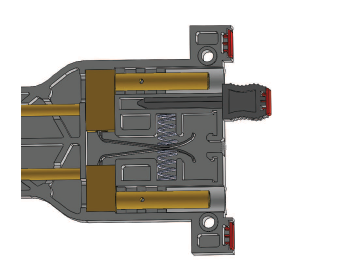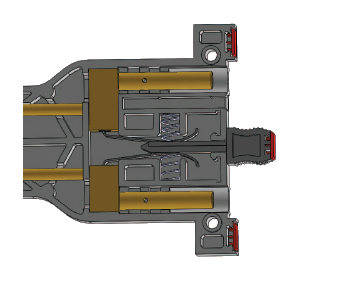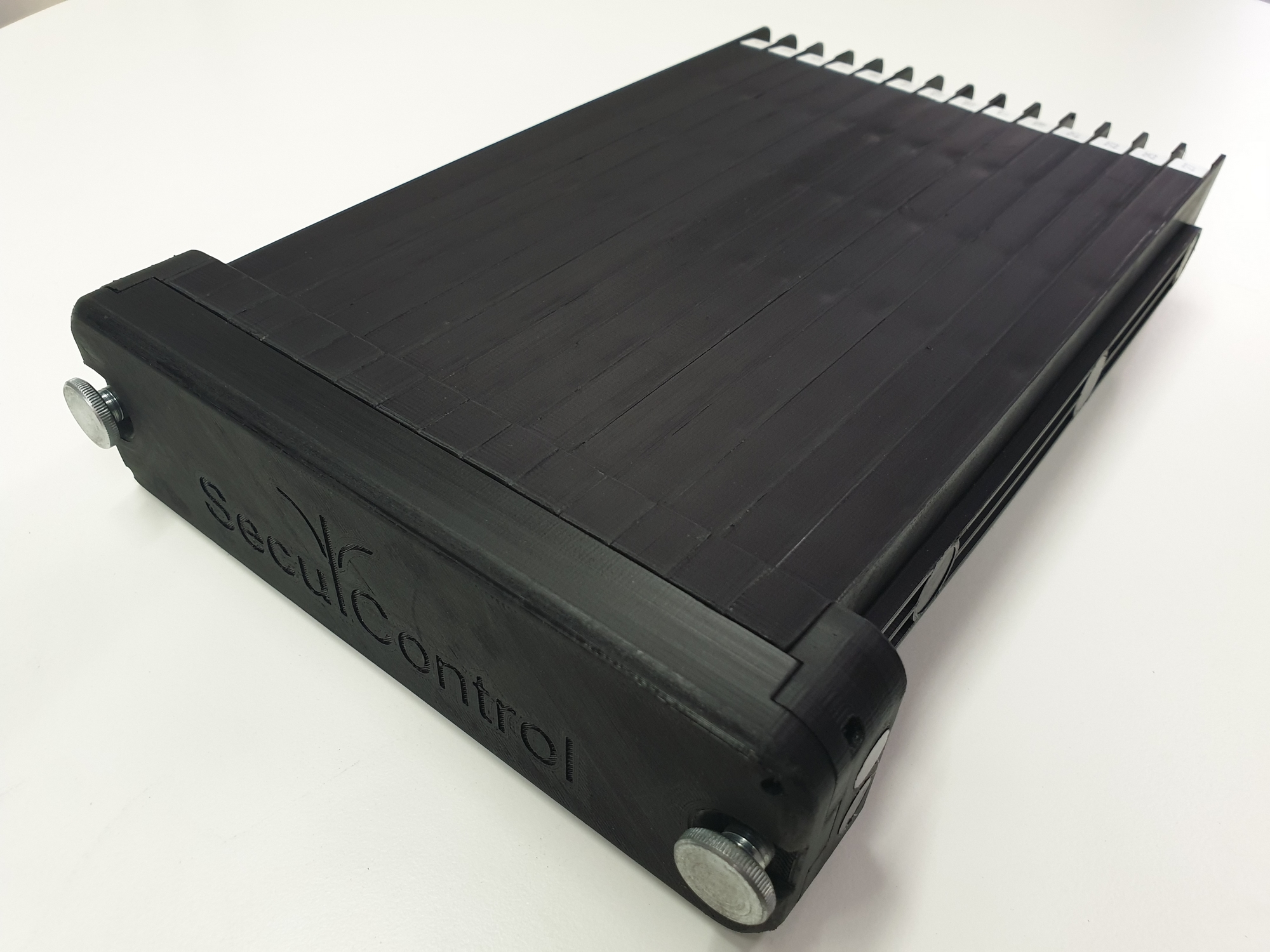Description
The Long Test Switch (LTS) is designed to safely disconnect IED's from the system and provide test access. Usable as a retrofit to FT switches in the same cutout size, or in any other application calling for test switches, the LTS provides many benefits.
Contact opening and safe make-before-break CT-shorting are achieved via integrated disconnect pins. Banana jacks provide test access. Separate test plugs are not needed, but available as an option. This translates into cost savings, prevention of errors, and very flexible usage.
Principle of Operation
 LTS in Normal Operation
LTS in Normal OperationThe LTS test block contains 8, 10, 12, 14, 16, 18 or 20 modular units (or poles) each allocated to a current, voltage, signal or trip circuit. Each circuit is connected through the block via two silver-plated copper contacts, pressed securely together by two pressure springs to create a highly conductive electrical connection. In this situation, a electrical connection is established between the device side (B) and the system side (A).
 LTS in Test Position
LTS in Test PositionWhen the disconnect pins is in the "test" position, a banana jack is accessible on the device side of the test block, allowing the connection of a test set and the associated signal injection. The banana jack on the system side is optional, but it is always accessible, if present.
 ST Switch
ST Switch
 Drawout Case Test Plug
Drawout Case Test Plug
 FTL
FTL
 LTS
LTS
 ITS / STP
ITS / STP
 FTS / FTP
FTS / FTP
 LTB / LTP
LTB / LTP
 SAX / PAX
SAX / PAX














 LTS in Normal Operation
LTS in Normal Operation LTS in Test Position
LTS in Test Position